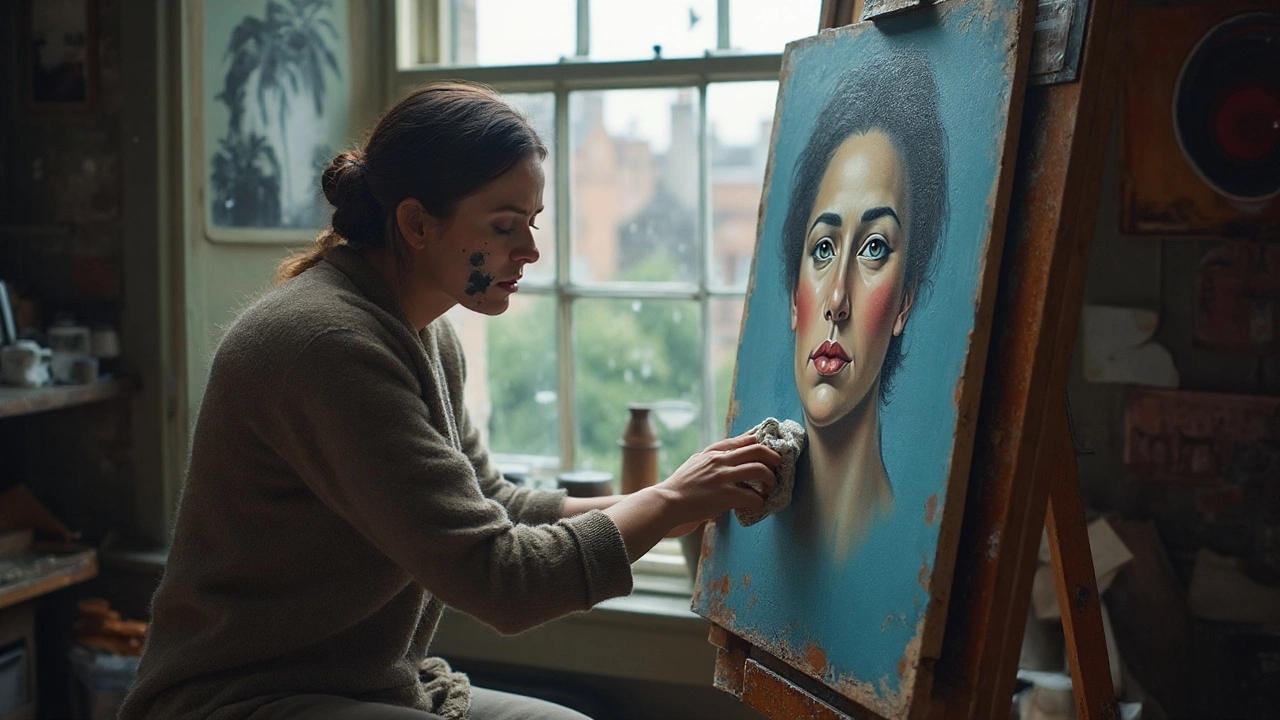Fix Oil Painting Mistakes: Simple Fixes for Common Errors
If you’ve ever found a spot of unwanted colour or a dry brush line ruining a masterpiece, you’re not alone. Oil paint is forgiving, but only if you know the tricks. Below are the go‑to fixes that will let you clean up a mess without starting over.
1. Correct Muddy Colours
When two pigments blend into a dull brown, it’s usually because you mixed too many hues at once. Grab a clean brush, add a bit of the dominant colour back in, and gently blend. If the brown is stubborn, thin a little linseed oil into the area and work the colour in thin layers. This method restores vibrancy without scrubbing away the paint.
2. Remove Unwanted Brush Strokes
Accidental strokes happen, especially on wet layers. While the paint is still tacky, use a clean, dry brush or a soft cloth to lift the excess. If the surface has dried, lightly dampen a palette knife with mineral spirits and scrape the mistake away. Follow up with a thin glaze of the surrounding colour to smooth the spot.
For deeper gouges, apply a fresh thin layer of ground (gesso) over the flaw, let it dry, then repaint. This fills the groove and gives you a clean canvas for the next step.
3. Fix Cracked Varnish
Cracks usually appear after the varnish has dried too quickly. Lightly rub the area with a soft cloth soaked in a tiny amount of turpentine to soften the varnish. Once it’s flexible, smooth it with a clean brush. Let it dry flat, away from direct sunlight, to avoid new cracks.
If the crack is big, scrape off the damaged varnish, clean the surface, then apply a fresh, thin coat of varnish using a spray bottle for an even finish.
4. Deal With Dry Brush Marks
Dry brush marks are those harsh lines that appear when you paint over a dry layer. The cure is to re‑wet the area with a little medium (like linseed oil) and blend the line into the surrounding paint. If the line stays stubborn, lightly sand the spot with ultra‑fine sandpaper (400 grit) and repaint.
5. Rescue Over‑Blended Areas
Sometimes you blend too much and lose texture. To bring depth back, add a thin glaze of a darker or complementary colour on top. Let it dry, then polish with a soft cloth. This restores contrast without erasing the work you’ve already done.
Remember, the key to fixing mistakes is to act while the paint is still workable. Keep a small bottle of mineral spirits, linseed oil, and a palette knife handy. With these tools and the steps above, you’ll turn mishaps into minor detours rather than full‑blown re‑starts.
Next time a mistake pops up, stay calm, follow a quick fix, and get back to painting. Oil paint rewards patience and a willingness to experiment – the more you practice these fixes, the smoother your creative process will become.

10 Sep 2025
Smudged a face or picked the wrong color? Learn safe, proven ways to fix wet, tacky, and dry oil paint, from wiping-out to glazing, scraping, and repainting.
Continue reading...
